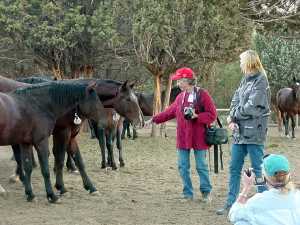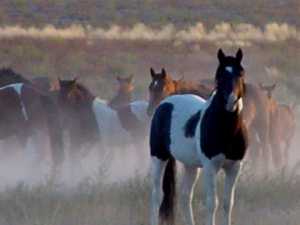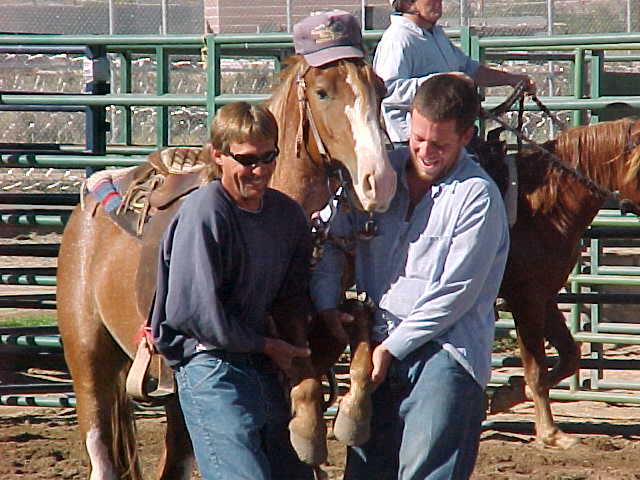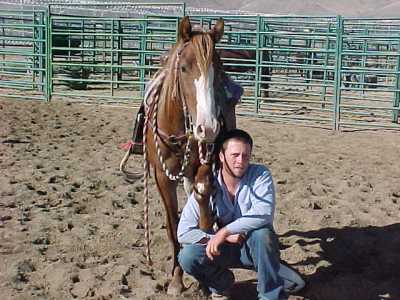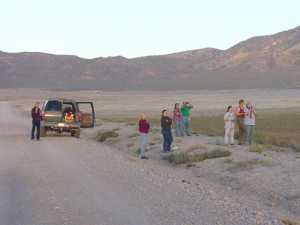|
Cost Savings or Intentional Failure?
|
Stallions greeting visitors
|
A new proposal to create "Planned Obsolescence?"The nation's wire services reported on November 5th that the Bureau of Land Management agreed Tuesday to study whether to suspend its wild horse adoption program. With a couple of members complaining that the program has been "costly" and "ineffective," a proposal was advanced by the Wild Horse and Burro Advisory Council to consider abandoning the Adopt-A-Wild Horse or Burro program for several years and concentrate on reducing the wild herds by shipping horses and burros to long term holding facilities.One basis for this argument was a statement made by Jeff Rawson, BLM Wild Horse and Burro Group Manager, "that the cost to the BLM to arrange an adoption is equal to three years of holding a horse at a long-term facility." Rawson did also point out that over time "the long-term holding costs may be greater." BLM will undertake a study comparing the costs of adoptions against putting a larger number of animals out to pasture at government centers in the Midwest. Using BLM's published figures, gathering and processing wild horses for adoption costs an average of $1,400.00 per head, at which point the animal becomes the responsibility of the adopter. Also using BLM's figures, placing a six year old horse in long term holding facility could cost an average of at least $9,000.00 over the life of the horse, and that amount is based upon today's costs which will most surely rise. In fiscal year 2003, the BLM removed 10,091 horses from public lands of which it adopted 6,185 head. |
Editorial ResponseIt is clear to the KBR Wild Horse and Burro News that once again the Wild Horse and Burro Advisory Council is out of step with reality. Increasing long term holding may generate some short term cost savings, but will burden the Bureau with huge and unprecedented long term debt. Disbanding the adoption program will terminate a significant outlet for getting excess wild horses and burros off the public dole. Once "suspended," the adoption program will likely take years to regain even its current level of efficiency when it needs to be pressed back into service.After years of observing the BLM's Wild Horse & Burro Program, the problem isn't really the horses or finances. First off, the horses and burros represent a historic resource. Like a host of other historic monuments and resources, the public has demanded that the Federal Government maintain these free-roaming animals for public benefit and public enjoyment. The fact is that whether it involves a national monument or "living symbols of the old west," these resources are often significantly subsidized in order to be preserved. One problem with BLM's Wild Horse and Burro Program is that while it is intended to be a national program it is divided into several relatively independent segments, many of which appear to have their own agendas. There is poor accountability to the National Program and in some regions, poor adherence to the goals and standards set by the National Program Office. The WHB program appears to be governed more by coercion than by authority. |
Wild Horses of the Onaqui Rangeshipment to long term holding facilities 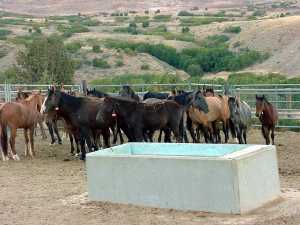
|
|
Silver State Industries also processes horses for BLM. In the adoption mentioned above, most of the horses were from BLM's wild horse and burro program. Not a single horse was left over after the adoption and a couple of horses sold for nearly $2,000.00. Silver State Industries is an enterprise program run by the Nevada Dept. of Corrections created by the late Director of Agriculture, Paul Iverson, and the Director of Corrections, Jackie Crawford. The Director of the horse training program is Hank Curry. For more information about this program, here are links to Silver State Industries' Horse Program and KBR Horse Net's feature on S.S.I.. Some BLM districts have significantly engaged states and the private sector to support the BLM's adoption program. As these relationships have developed they have improved efficiencies with respect to a number of program elements. Other districts have been less progressive and have been more troublesome. It's time, not to overhaul BLM's adoption program, but rather its business perspective. As some western cattlemen critical of BLM have said, "If BLM could run its program like a legitimate agribusiness, it would be more effective and cost the taxpayers a lot less money." To some extent we have to agree. Unfortunately the WHB program appears to be more governed by politics than business acumen. New ideas are canceled before they have the chance to develop and work. Decisions are forced that create short term benefits, but often have hidden long term costs. Our Federal Government seems to constantly mortgage its future. Abandoning the adoption program and plunging full tilt into long term holding is a mortgage that carries a huge debt. The KBR Wild Horse and Burro News fears that the proponents of this idea have another agenda; one that will make the Wild Horse and Burro Program so prohibitively costly that the program will require euthanasia and all the horses and burros be removed from the range. What other rational reason would they have to propose a plan that costs at least six times as much, yet ignore other solutions that have proven to be reasonably cost-effective? Either these members of the Advisory Council are not interested in the welfare of the Wild Horse and Burro Program or they desperately need a course in basic accounting. |
The Warm Springs Prison Training Program
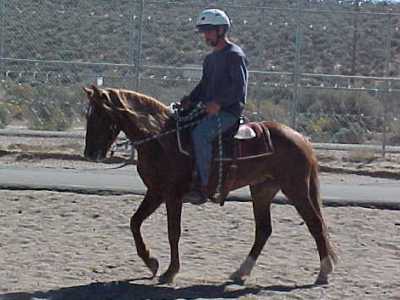
A program that develops self-esteem and teamwork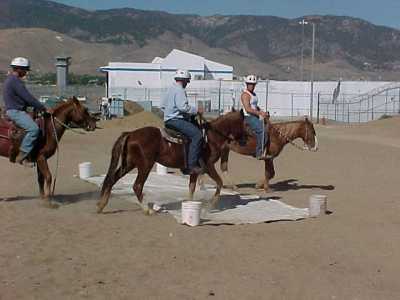
A program that not only develops horse-human |
|
It is time for America's wild horses and burros to stop being political pawns, and instead be managed as intended by the Wild Free-Roaming Horses and Burros Act using sound agribusiness principles sprinkled with a modest dose of sensible imagination. The answers are out there, but the Commission has to get its head out of politics and see what real world resources are available to resolve the program's current fiscal crisis. |
Visitors viewing and photographing wild horses |
|
Return to KBR Wild Horse and Burro NewsReturn to KBR World of Wild Horses & BurrosGo to other Wild Horse LinksGo To
| |
